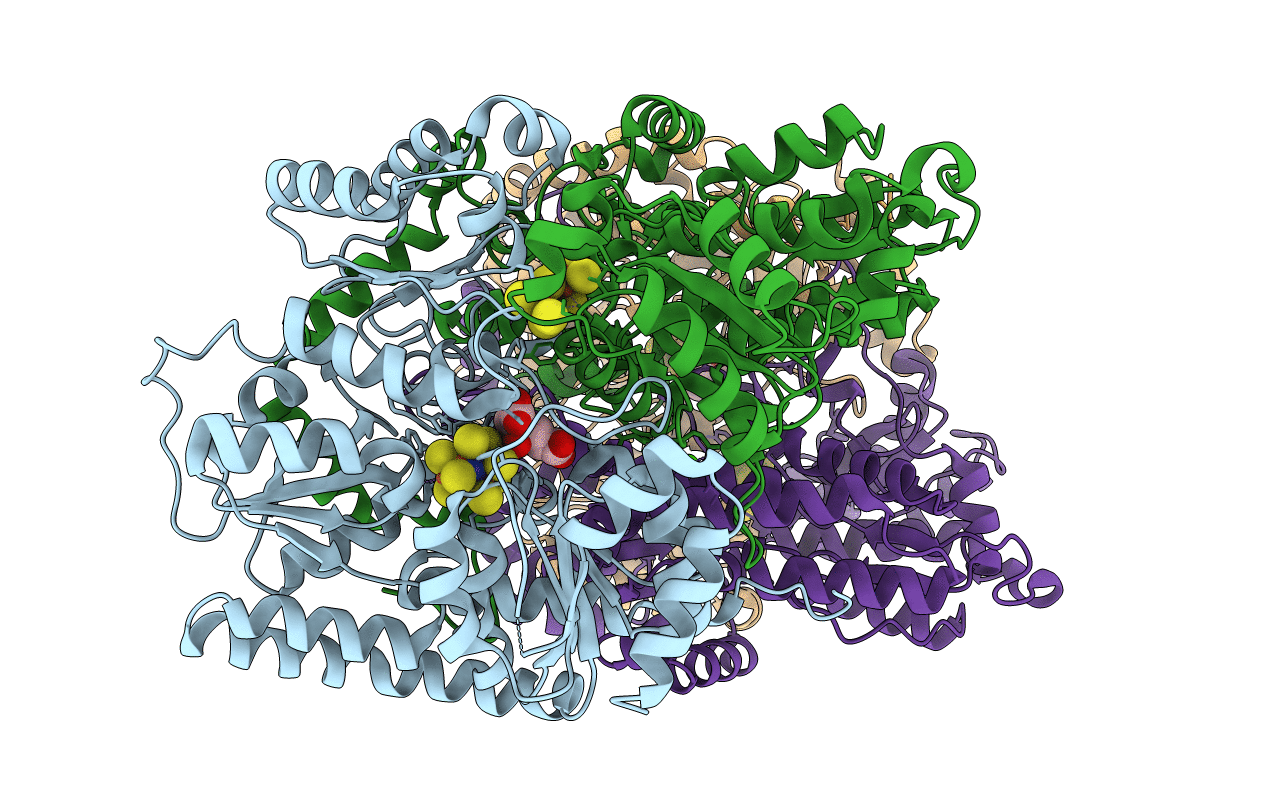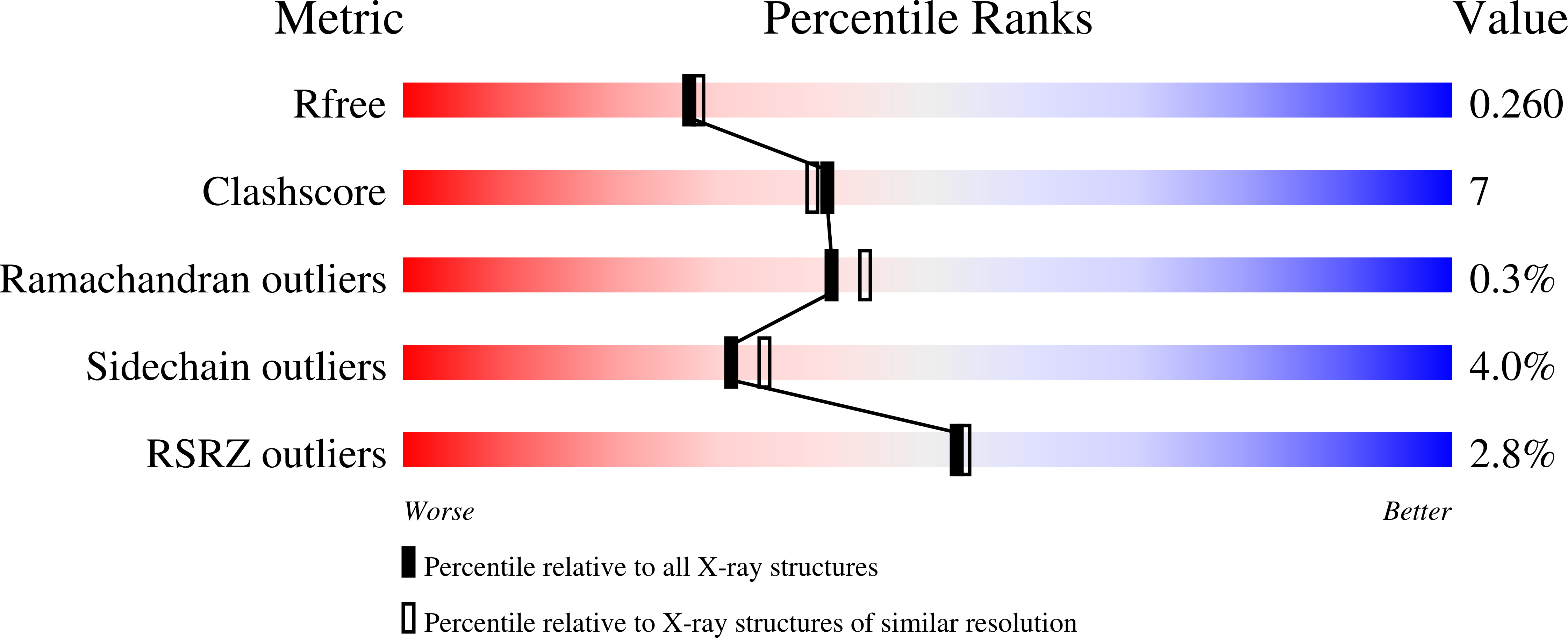
Deposition Date
2009-09-26
Release Date
2010-02-16
Last Version Date
2023-09-06
Entry Detail
PDB ID:
3K1A
Keywords:
Title:
Insights into substrate binding at FeMo-cofactor in nitrogenase from the structure of an alpha-70Ile MoFe protein variant
Biological Source:
Source Organism:
Azotobacter vinelandii (Taxon ID: 354)
Host Organism:
Method Details:
Experimental Method:
Resolution:
2.23 Å
R-Value Free:
0.25
R-Value Work:
0.20
R-Value Observed:
0.20
Space Group:
P 1 21 1


